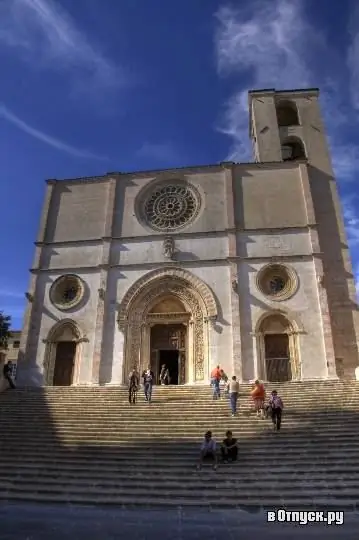
Description of the attraction
The Cathedral of Todi, named after Santa Maria Annunziata, is the main church of the small Umbrian town, built in the 11th century in the Gothic style. It is believed to have been erected on the site of a pre-existing Roman building, possibly a pagan temple dedicated to Apollo. This is indicated by the antique bronze statuette of the god Mars, found here and now kept in the Vatican Museums.
Todi Cathedral was almost completely rebuilt after a terrible fire in 1190 - it was then that the church acquired its modern look. The main feature of the square Lombard-style façade is the huge central rosette window, characteristic of most Gothic churches, but added only in 1513. The wooden portal made by Antonio Bencivenni from Mercatello dates back to the same period - only the four upper panels have survived to this day.
Inside the cathedral is made in the form of a Latin cross with a central nave and two side chapels. They say that once there was another side-altar, which was called "La navatina", but nothing remained of it, and it is not known whether it existed at all. On the reverse side of the facade, just above the round rosette window, there is a huge fresco depicting scenes from the Last Judgment - this is the creation of the painter Ferrau Faenzone, who was known by the nickname Il Faenzone. This work was commissioned to him by Cardinal Angelo Cesi himself. The altar part of the temple is notable for the Gothic altar and the magnificent two-level choir fence, made in 1521. Other significant works of art are the 13th century Crucifixion, made in the tradition of the Umbrian school, a beautiful old font and colorful stained glass windows.






